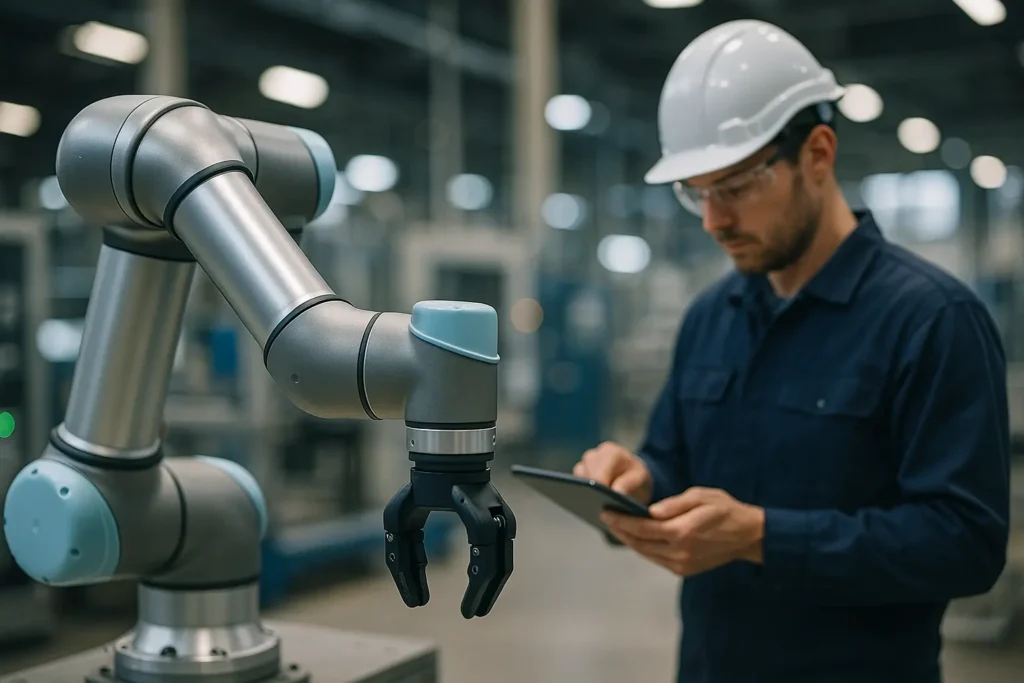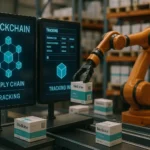Imagine a workspace where robots and humans operate side by side, not in competition but in collaboration. Welcome to the dynamic world of cobots—or collaborative robots—emerging as game changers in the industrial landscape. As we dive into this detailed exploration, let’s unravel the essence of cobots, their transformative role in automation, and how they are shaping the future of work.
The Rise of Cobots in Modern Industries
In the rapidly evolving sphere of automation, industries are continuously looking for innovative solutions that merge efficiency with human oversight. Enter cobots—a modern marvel designed to enhance production, increase safety, and amplify precision. Unlike traditional robots, cobots are engineered to work in tandem with humans, not in isolation. They are lightweight, agile, and are often equipped with state-of-the-art sensors to ensure seamless interaction with their human counterparts.
Why have cobots become indispensable? The answer lies in their versatility. From simple, repetitive tasks to complex operations requiring nuanced programming, cobots can be deployed in diverse settings. Take the automotive industry, for instance, where cobots have significantly reduced error margins by performing precision-driven tasks. In electronics manufacturing, they handle delicate components with unmatched care, ensuring quality and speed. The payload capacity of these collaborative robots might be lesser compared to their industrial peers, but their precision and flexibility make them an invaluable asset.
As we continue to embrace the potential of cobots, industries must recognize that their strength lies in collaboration. By leveraging cobots for data analysis, handling hazardous materials, or simply automating mundane tasks, we are not just increasing efficiency—we’re paving the way for a future where human creativity and robotic precision go hand in hand.
Understanding Cobots: From Sensors to Programming
A cobot’s operational prowess is rooted in its sensors and intuitive programming. These sensors ensure that the cobot can interpret its environment, making real-time adjustments to avoid collisions and enhance safety. For instance, proximity sensors alert the cobot to human presence, allowing it to slow down or stop as necessary. This not only prevents accidents but also fosters a harmonious work environment.
Programming a cobot is both an art and a science. Unlike traditional robots, which often require specialized coding, cobots are designed to be user-friendly. Many systems are equipped with drag-and-drop interfaces, making them accessible even to those without a strong technical background. The beauty of this simplicity is that it empowers workers across various sectors to harness the capabilities of cobots without extensive training.
Moreover, cobots can be reprogrammed with ease. This flexibility means that as production demands shift or new tasks arise, cobots can quickly adapt, ensuring that industries remain agile and responsive. As we look toward a future brimming with technological advancements, the adaptability of cobots stands as a testament to their enduring relevance.
Cobots and Human Collaboration: A New Era of Work
The narrative surrounding robots often evokes images of machines usurping human jobs. Yet, with cobots, the story takes a different turn. These collaborative machines are not here to replace us—they’re here to work with us. The fusion of human intuition and robotic precision heralds a new era of employment, one where tasks are distributed based on strengths rather than limitations.
The integration of cobots into the workplace underscores the importance of maintaining a human touch in industrial processes. While machines excel in precision and consistency, humans bring creativity, problem-solving, and adaptability to the table. Together, cobots and humans form a powerful alliance, propelling industries towards innovation and excellence.
As we embrace this collaborative future, we must also ensure that the workforce is prepared. Safety training becomes paramount, emphasizing the need for workers to understand the nuances of working alongside cobots. It’s not just about coexisting but thriving together. With the right protocols and precision in place, cobots can significantly reduce workplace injuries and improve overall productivity.
In this modern landscape, cobots are transforming our perception of work. They allow us to focus on what we do best: innovate, create, and dream, while they handle the routine, the repetitive, and the rigorous.
As we stand at the intersection of technology and tradition, cobots offer a glimpse into the future of industrial work. They challenge us to rethink how we view automation and its role in our lives. Rather than a replacement, cobots are an extension of human capability—a bridge between what machines can achieve and the boundless potential of human ingenuity.
In embracing cobots, we are not just investing in machinery; we are investing in a future where collaboration trumps competition, and where humans and machines share the stage in harmony. As industries continue to evolve, let us welcome cobots as partners in our journey, transforming the landscape of production and reshaping the way we view work.
FAQ
What are cobots and how do they differ from traditional robots?
Cobots, or collaborative robots, are designed to work alongside humans in a shared workspace. Unlike traditional robots that operate in isolation, cobots are equipped with advanced sensors and software to ensure safety and collaboration.
What industries benefit most from using cobots?
Cobots are versatile and can be utilized across various sectors, including manufacturing, healthcare, logistics, and agriculture. They are particularly beneficial in environments where tasks require precision, repetition, or are ergonomically challenging for humans.
How do cobots enhance workplace safety?
Cobots are built with safety features such as force limiting, speed control, and advanced sensors that detect human presence. These features ensure that cobots can stop or slow down to prevent injury, making them safer to work alongside humans.
Can cobots be programmed easily by non-experts?
Yes, one of the main advantages of cobots is their user-friendly programming. They often come with intuitive interfaces and can be taught tasks through manual guidance, making them accessible even to those without extensive technical expertise.
What are the cost implications of integrating cobots into a business?
While the initial investment in cobots can be significant, they offer long-term savings through increased efficiency and reduced labor costs. Additionally, their flexibility and ease of redeployment across tasks make them a cost-effective choice for many businesses.



